When winter descends in Europe, travellers across the continent often flock to its most famous winter sun destinations (Malta, the Canary Islands and Southern Portugal to name a few!).
But what about the other side of Europe in winter? The coldest side?
If you’re keen on visiting the coldest cities in Europe – or are just curious about where is the most freezing in the winter months – this post is for you!
What are the coldest places in Europe?
The coldest places in Europe include:
- Narvik, Norway
- Jukkasjärvi, Sweden
- Rovaniemi, Finland
- Reykjavik, Iceland
- Tromsø, Norway
- Zakopane, Poland
- Kiruna, Sweden
- Svalbard, Norway
- Abisko, Sweden
- Saariselkä, Finland
- Helsinki, Finland
- Tallinn, Estonia
Let’s take a look at them each in more detail.
Narvik, Norway
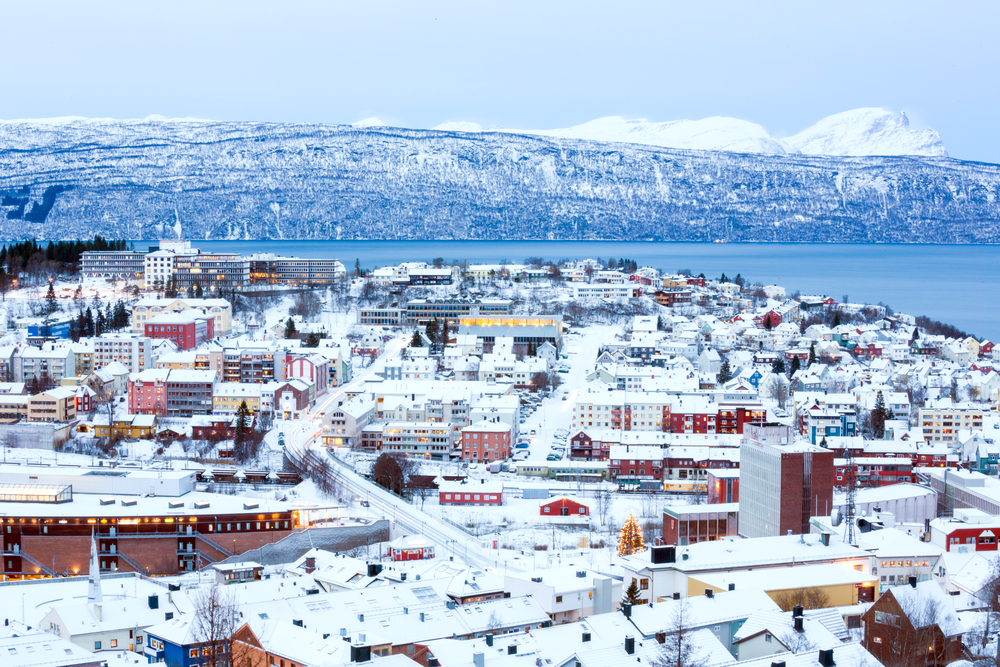
In Narvik, winter is a grand spectacle. In this Norwegian haven, the polar nights stretch long, casting the town into a mystical twilight.
The temperature, often dropping to -15°C (5°F) or lower, brings a profound silence broken only by the crunch of snow underfoot.
The landscape, a canvas of white, is fringed by the rugged mountains that plunge dramatically into the icy fjords.
In Narvik, the Aurora Borealis dances across the sky, painting it with ethereal greens and purples, a sight that leaves onlookers in awe.
The town itself, though small, pulsates with life in its cosy cafes and eateries, offering warm respite from the Arctic chill.
For the adventurous at heart, Narvik offers world-class skiing, with slopes that cater to all levels, each offering breathtaking views of the surrounding wilderness.
And for those who seek serenity, a simple stroll through the snow-laden streets is a venture into a winter wonderland.
Jukkasjärvi, Sweden
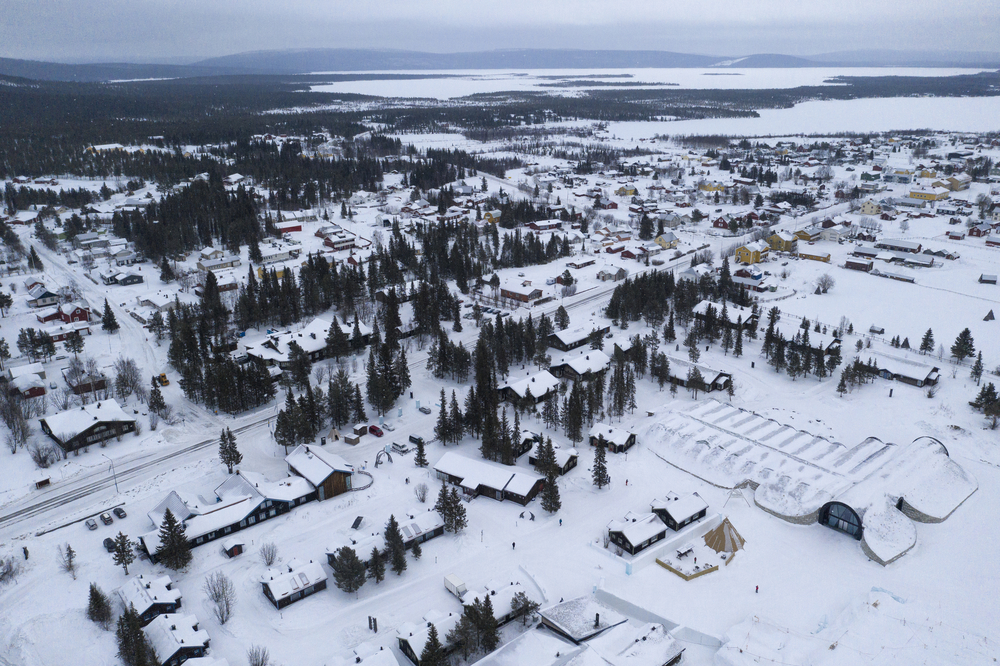
Further east, deep within Swedish Lapland, lies the quaint village of Jukkasjärvi.
Known for its famous Icehotel, this village transforms into a realm of ice and snow each winter.
Here, temperatures plunge daringly, often reaching -25°C (-13°F), turning the Torne River into a frozen wonder.
The Icehotel, a marvel of ice and snow, is reborn annually, each room a unique masterpiece sculpted by artists from around the globe.
Sleeping in a room made entirely of ice is an experience like no other, one that is both exhilarating and surreal.
Jukkasjärvi’s charm extends beyond its icy accommodations.
The village is an ideal spot for witnessing the Northern Lights, their colours reflecting off the snow and ice, creating a spectacle of nature’s own design.
Dog sledging and snowmobile tours offer exhilarating ways to explore the winter landscape, with the promise of a hot drink by a fire never far away.
And for a touch of local culture, the Sámi, the area’s indigenous people, provide insights into a way of life harmoniously intertwined with the Arctic environment.
Rovaniemi, Finland
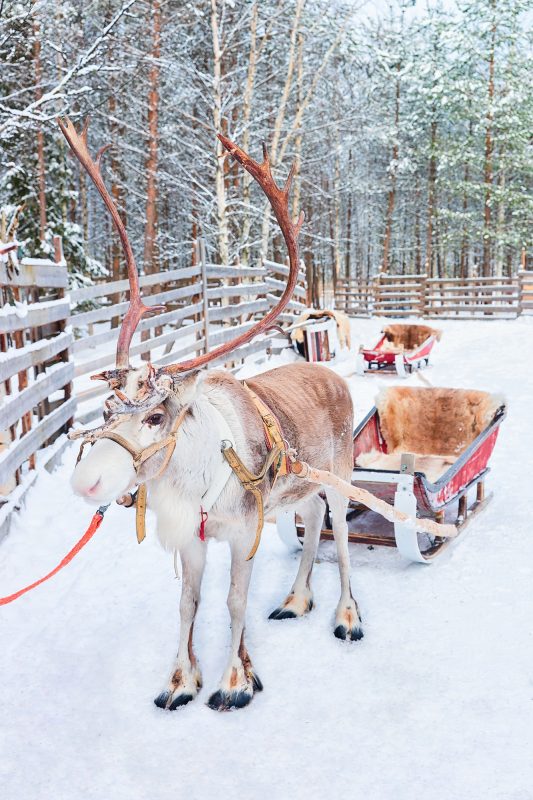
Journey to Rovaniemi, a city that lies in the heart of Finnish Lapland, just whispers away from the Arctic Circle.
This city is renowned as the official hometown of Santa Claus.
As you step into Rovaniemi, you’re greeted by a world where winter is not just a season, but a celebration of life.
Temperatures often take a plunge, reaching as low as -30°C (-22°F). It’s one of the snowiest places in Europe for this reason!
The city is adorned with lights and festive decorations, casting a warm glow against the stark white of the snow.
Santa Claus Village is the heart of the holiday spirit, bustling with joy and the laughter of children.
Beyond the festive cheer, Rovaniemi is a gateway to the Arctic wilderness. It’s a place where you can embark on a husky sledge adventure, glide through forests on a reindeer sleigh, or witness the majestic Northern Lights painting the night sky in vivid hues.
Reykjavik, Iceland
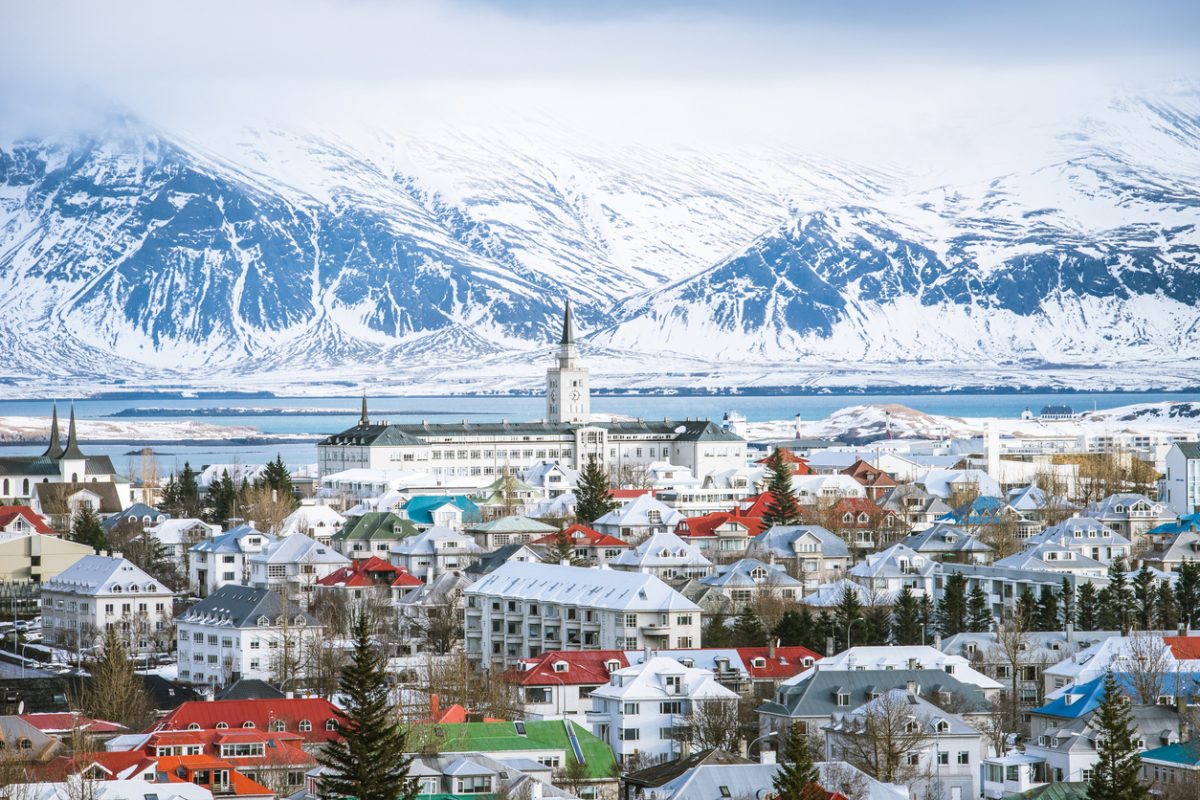
Venture northwest to Reykjavik, the capital of Iceland, where the Atlantic meets the Arctic.
This city, the northernmost capital of a sovereign state, is a juxtaposition of fire and ice, where geothermal warmth meets the cold embrace of the Arctic.
Winter in Reykjavik is a phenomenon of its own.
With average temperatures hovering around -10°C (14°F), the city becomes a haven for those who revel in the colder side of nature.
The streets, lined with colourful houses and modern architecture, are often blanketed in snow, offering a picturesque urban winter setting.
Reykjavik serves as the perfect base for exploring Iceland’s natural wonders.
From here, you can easily access the Golden Circle, a route that takes you to some of Iceland’s most stunning sights, including geysers, waterfalls, and the Thingvellir National Park.
The city itself is vibrant, filled with art, culture, and a thriving culinary scene. Warm up in one of the many cosy cafes or take a dip in the geothermal pools, an integral part of Icelandic culture.
Tromsø, Norway
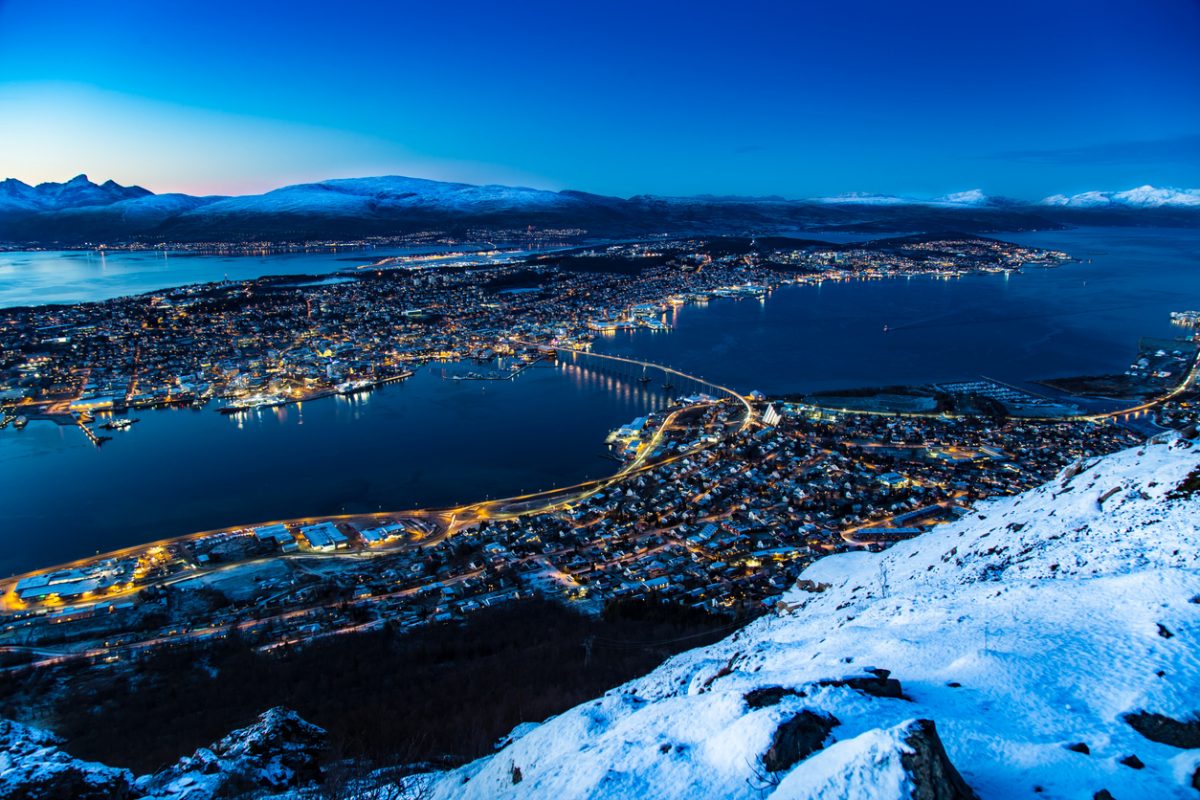
Embark on a journey to Tromsø, Norway, a city that sits above the Arctic Circle, where winter is not just a season but a celestial celebration.
Known as the Gateway to the Arctic, Tromsø is a city where the sun barely rises in winter, creating a mesmerizing twilight during the day.
With temperatures that frequently fall below -15°C (5°F), Tromsø is enveloped in a blanket of snow that sparkles under the faint Arctic light.
The city, surrounded by mountains and fjords, offers a stunning contrast of nature and urban life.
But the true magic of Tromsø lies in its night sky.
Here, the Northern Lights, or Aurora Borealis, make frequent appearances, dancing in hues of green and purple, casting an ethereal glow over the snow-covered landscape.
Despite its chilly temperatures, Tromsø buzzes with warmth and activity. Its streets are dotted with cosy cafes and restaurants offering local delicacies.
The city also boasts a range of winter activities, from dog sledging to snowshoeing, allowing visitors to embrace the polar environment in all its glory.
Zakopane, Poland
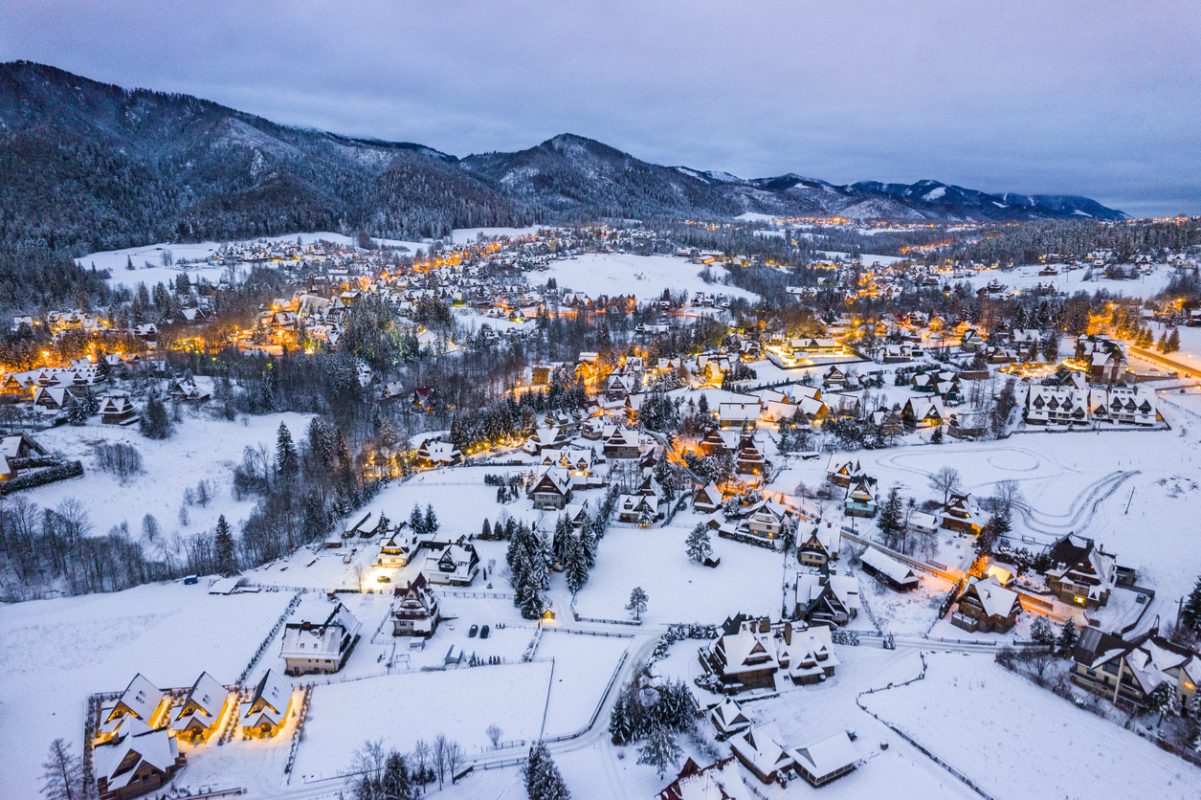
Travel south to Zakopane, Poland, nestled at the foot of the Tatra Mountains.
This mountain resort town is Poland’s winter capital, where temperatures often dip below -20°C (-4°F), creating perfect conditions for winter sports enthusiasts.
Zakopane is a blend of natural beauty and cultural richness. The town’s wooden architecture, with its unique Zakopane Style, adds to the charm of the snowy landscape.
The town’s proximity to the Tatra National Park makes it an ideal destination for skiing, snowboarding, and hiking. The snow-capped peaks of the Tatras offer breathtaking views and challenging slopes for all levels of skiers and snowboarders.
Beyond the slopes, Zakopane’s Krupówki Street is a bustling centre with shops, restaurants, and cafes.
Here, you can indulge in traditional Polish cuisine or shop for local handicrafts.
The town also hosts numerous winter festivals, celebrating the region’s culture and traditions, adding to the festive atmosphere.
Kiruna, Sweden

Venture to Kiruna, the northernmost town in Sweden, a place where winter reigns with an icy grip. In this Arctic haven, the winters are a profound experience, with temperatures often plunging below -20°C (-4°F).
The town of Kiruna is a unique blend of rugged Arctic wilderness and innovative community life.
During the long winter months, the sun barely crests the horizon, bathing the landscape in a perpetual twilight that adds a mystical quality to the snow-draped surroundings.
Kiruna is renowned for the Icehotel, an architectural marvel rebuilt every year using ice from the nearby Torne River.
Each room in the hotel is an art installation, sculpted by artists from around the globe, offering guests an enchanting, albeit chilly, night’s sleep.
The awe-inspiring Northern Lights are frequent visitors to Kiruna’s skies, creating a spectacular light show that illuminates the Arctic landscape.
For the adventurous, dog sledging and snowmobile tours offer immersive ways to explore the surrounding wilderness.
Svalbard, Norway
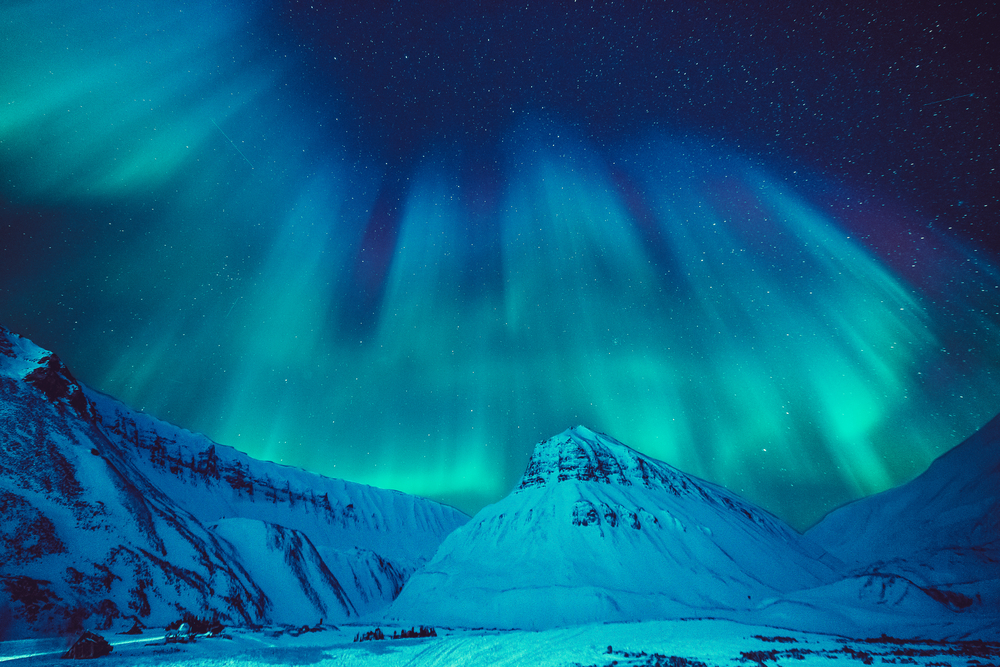
Further north lies Svalbard, a remote archipelago situated between mainland Norway and the North Pole.
Here, in one of the world’s northernmost inhabited areas, winter is a dominating force, with temperatures often dropping below -30°C (-22°F).
Svalbard is a land of stark beauty and extreme conditions.
Its polar environment is both harsh and captivating, with glaciers, frozen tundras, and rugged mountains defining the landscape. It’s a place where polar bears roam, and the concept of day and night blurs during the polar nights.
Despite its remoteness, Svalbard is a hub of scientific research and exploration.
The main settlement, Longyearbyen, offers a surprising array of amenities and a tight-knit community known for their resilience and warmth in the face of Arctic challenges.
Visitors to Svalbard can engage in unique experiences like glacier hiking, ice cave explorations, and wildlife safaris that offer glimpses of the native polar bears, arctic foxes, and reindeer.
The archipelago also provides a rare opportunity to witness the surreal beauty of the polar night, a time when the sun does not rise above the horizon, and the landscape is cast in an ethereal twilight.
Abisko, Sweden
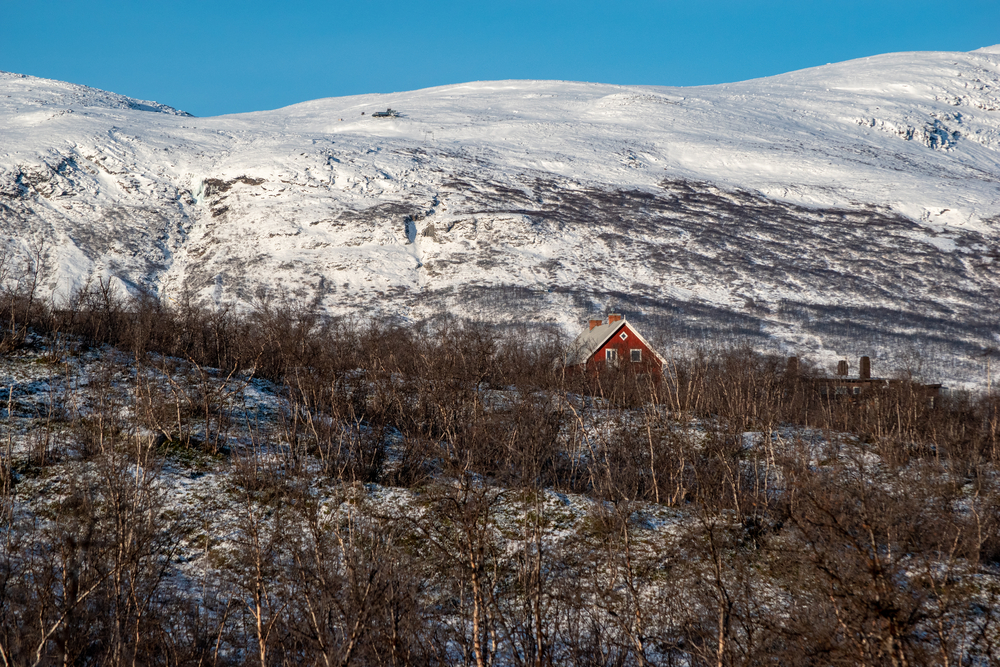
In the heart of Swedish Lapland lies Abisko, a small village that stands as a testament to the serene beauty of the Arctic wilderness.
Renowned for its national park and as one of the premier destinations to witness the Northern Lights, Abisko is a jewel in the crown of the Arctic Circle.
As winter envelops this quaint village, temperatures plummet, often dropping below -20°C (-4°F), turning the landscape into a frozen tableau.
But it’s not just the cold that draws visitors to Abisko; it’s the promise of one of nature’s most spectacular displays.
The clear, dark skies of Abisko provide an ideal backdrop for the Aurora Borealis.
These celestial lights dance across the heavens in a display of vibrant colors, creating a natural light show that captivates and enchants.
Abisko National Park offers more than just auroral displays; it’s a haven for winter activities. Whether it’s cross-country skiing through the pristine wilderness, snowshoeing across untouched snow, or simply enjoying the quiet solitude of the Arctic, Abisko is a place where winter’s magic is palpable.
Saariselkä, Finland
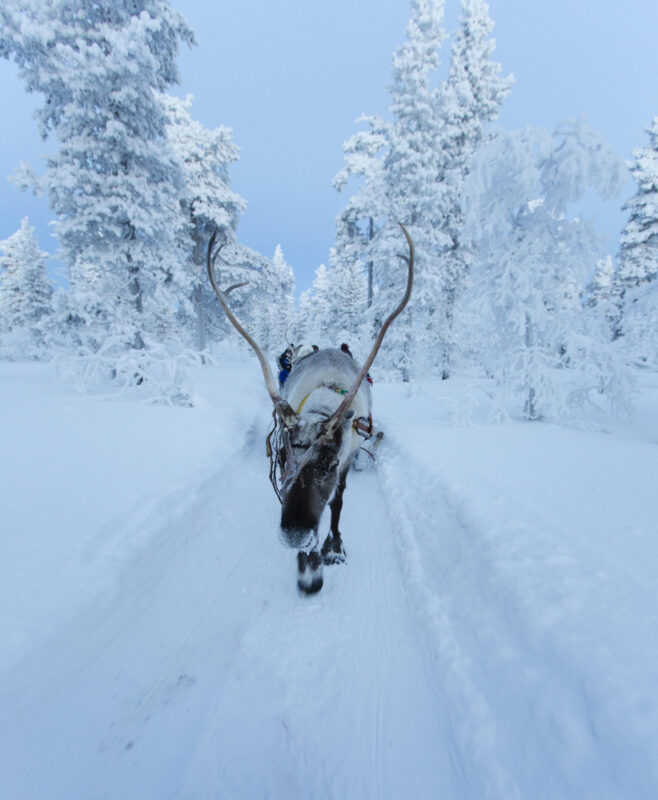
Venture further into the Arctic realm to Saariselkä, a village nestled in the northern reaches of Finland. Known for its exceptional winter sports and as another prime location for Northern Lights viewing, Saariselkä is a paradise for those who embrace the colder side of nature.
In the grip of winter, Saariselkä’s temperatures can dive below -30°C (-22°F), creating a landscape that is both challenging and awe-inspiring. This village is more than just a spot on the map; it’s an escape into a world where winter rules supreme.
The village offers a range of winter sports, from downhill skiing on its powdery slopes to snowmobiling through the vast, open wilderness. For those seeking a more tranquil experience, husky sledding offers a unique way to explore the snowy landscape, with only the sound of sled runners and canine paws against the snow.
As night falls, the skies above Saariselkä come alive with the Northern Lights, turning the sky into a canvas of brilliant colours.
It’s a place where the harshness of winter is balanced by the beauty of the Arctic sky, offering an unforgettable experience to all who visit.
Tallinn, Estonia

Step into the enchanting streets of Tallinn during winter and feel as though you’ve wandered into a medieval fairy tale.
The Estonian capital, wrapped in a blanket of snow, exudes a timeless charm, particularly in its Old Town, a UNESCO World Heritage site.
As you wander through the narrow, cobblestone streets, you’ll find them lined with historic buildings, their rooftops dusted with snow, creating a scene reminiscent of a classic winter painting.
The cold bites crisply in the air, with temperatures that often hover around -8°C (18°F), but can plunge daringly lower, reaching the depths of -20°C (-4°F) in the heart of winter.
Amidst this frosty setting, Tallinn’s Christmas market glows warmly in Town Hall Square.
Here, amidst the historic backdrop, wooden huts teem with handcrafted goods, and the air is scented with the aroma of mulled wine and traditional Estonian holiday treats.
Helsinki, Finland

Cross over to the shores of Finland, where Helsinki awaits with its own winter spectacle. The city, situated along the Baltic coast, is a blend of modern design and historical elegance, especially under the spell of winter.
Helsinki’s winters are long and cloaked in darkness, with the sun making brief appearances.
The average temperatures, typically ranging from -1°C to -6°C (30°F to 21°F), can sometimes take a dramatic dive, creating a frosty landscape that sparkles under the occasional sunlight.
The heart of Helsinki’s winter is its Christmas markets, with the most prominent one at Senate Square. Surrounded by neoclassical architecture, including the iconic Helsinki Cathedral, the market is a hub of Finnish holiday spirit.
Stalls brim with local crafts, Finnish design items, and an array of culinary delights, from reindeer meat to the sweet Finnish pastries, warming the coldest of days.
Now you know the coldest places in Europe!
While there are other cold cities in Europe, these consistently stand out as some of the chilliest – especially in the winter months.
Personally, I found Tallinn to be absolutely freezing – check out my YouTube video about it!
